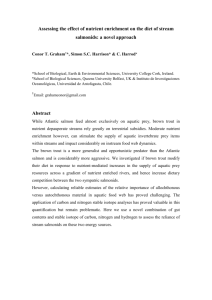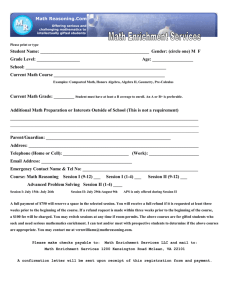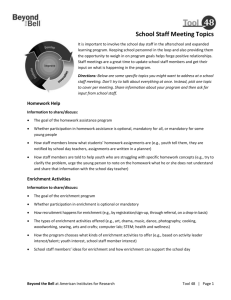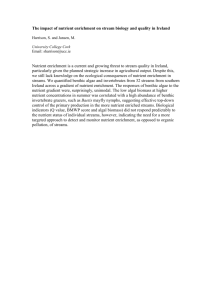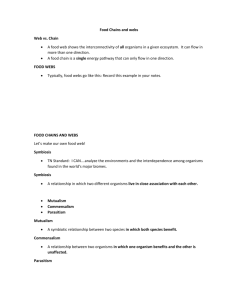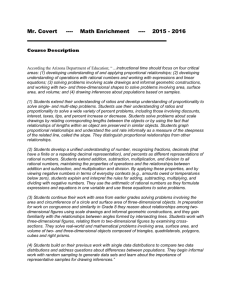ele1823-sup-0001-AppendixS1
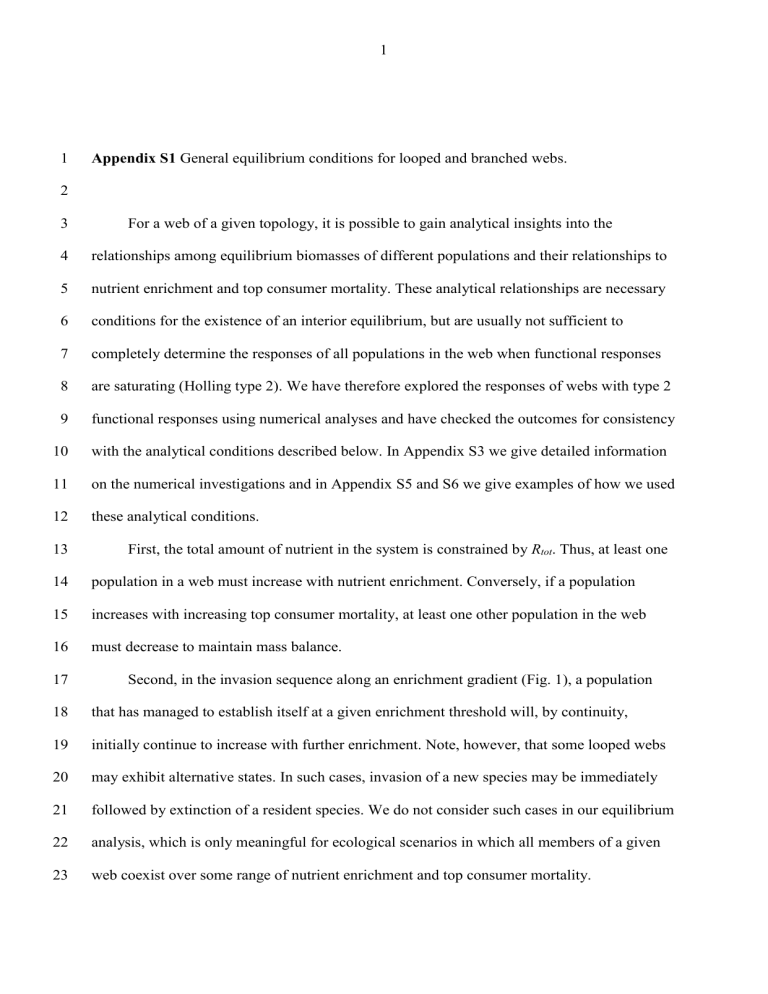
1
1 Appendix S1 General equilibrium conditions for looped and branched webs.
2
3 For a web of a given topology, it is possible to gain analytical insights into the
4 relationships among equilibrium biomasses of different populations and their relationships to
5 nutrient enrichment and top consumer mortality. These analytical relationships are necessary
6 conditions for the existence of an interior equilibrium, but are usually not sufficient to
7 completely determine the responses of all populations in the web when functional responses
8 are saturating (Holling type 2). We have therefore explored the responses of webs with type 2
9 functional responses using numerical analyses and have checked the outcomes for consistency
10 with the analytical conditions described below. In Appendix S3 we give detailed information
11 on the numerical investigations and in Appendix S5 and S6 we give examples of how we used
12 these analytical conditions.
13 First, the total amount of nutrient in the system is constrained by R tot
. Thus, at least one
14 population in a web must increase with nutrient enrichment. Conversely, if a population
15 increases with increasing top consumer mortality, at least one other population in the web
16 must decrease to maintain mass balance.
17 Second, in the invasion sequence along an enrichment gradient (Fig. 1), a population
18 that has managed to establish itself at a given enrichment threshold will, by continuity,
19 initially continue to increase with further enrichment. Note, however, that some looped webs
20 may exhibit alternative states. In such cases, invasion of a new species may be immediately
21 followed by extinction of a resident species. We do not consider such cases in our equilibrium
22 analysis, which is only meaningful for ecological scenarios in which all members of a given
23 web coexist over some range of nutrient enrichment and top consumer mortality.
2
1 Third, the rates of change of all species in a web have to equal zero. This condition can
2 sometimes be used to derive the direction of change of a population compared to another
3 population or in response to a parameter change. Specifically, four types of general conditions
4 can be derived:
5 (i) The equilibrium condition for a specialist top consumer TC i
in a branched web is
6 dTC i dt
TC i e
X i
TC i a
X i
TC i
1
a
X i
TC i h
X i
TC i
X i
X i
m
TC i
0 . (A1-1)
7 Eq. A1-1 can be solved for X i
, the prey species of the specialist top consumer in chain i , as
8 X i
* e
X i
TC i m
TC i
m
TC i h
X i
TC i
a
X i
TC i
(A1-2)
9 From eq. A1-2 follows that X i
is controlled by its specialist top consumer. It remains at a fixed
10 value with enrichment or with a change in top consumer mortality in the other chain, but
11 increases when the mortality rate of its own (top) consumer is increased.
12
13 Z i
is
(ii) The equilibrium condition for an intermediate species Y i
with a specialist consumer
14 dY i dt
Y i e
X i
Y i a
X i
Y i
X i
1
a
X i
Y i h
X i
Y i
X i
m
Y i
1
a
Y i
Z i a
Y i
Z i h
Y i
Z i
Y i
Z i
0 . (A1-3)
15 It follows that, if Y i
and Z i
change in opposite directions with nutrient enrichment or with a
16 change in top consumer mortality, X i
must change in the same direction as Z i
. The same is true
17 if Y i
remains constant. If Z i
remains constant, X i
must change in opposite direction to Y i
.
18
19
(iii) The equilibrium condition of a generalist top consumer TC is dTC
TC dt 1 e
X
1
TC a a
X
1
TC
X
1
TC h
X
1
X
1
TC
X
1
e
X
2
TC
a a
X
2
TC
X
2
TC h
X
X
2
TC
2
X
2
m
TC
0
20 which can be rearranged to
3
1
e
X
1
TC
m
TC h
X
1
TC
a
X
1
TC
X
1
* m
TC
e
X
2
TC
m
TC h
X
2
TC
a
X
2
TC
X
*
2
. (A1-4)
2
3
Since we assume that the generalist top consumer can persist on each prey species alone given sufficient prey density, both
e
X
1
TC
m
TC h
X
1
TC
and
e
X
2
TC
m
TC h
X
2
TC
must be positive. It
4 therefore follows from eq. A1-4 that the two prey species of a generalist top consumer are
5 always negatively correlated if their densities change in response to enrichment (increasing
6 R tot
). In contrast, they may change in the same direction with a change in m
TC
in some webs
7 (Fig. 2p).
8 (iv) From the equilibrium condition for each prey species Y i
of a generalist top
9 consumer TC
10 dY i dt
Y i e
X i
Y i a
X i
Y i
X i
1
a
X i
Y i h
X i
Y i
X i
m
Y i
1
a
Y
1
TC h e
Y i
TC
Y
1
TC
Y
1 a
Y i
TC
a
Y
2
TC h
Y
2
TC
Y
2
TC
0
11 the following expression can be derived
12
1 i
* e
X i
Y i
a a
X i
Y i
X i
Y i h
X
X i
Y i
X i
*
m
Y i e
Y i
TC a
Y i
TC
1
a
Y
1
TC h
Y
1
TC
TC
*
Y
1
* a
Y
2
TC h
Y
2
TC
Y
2
*
. (A1-5)
13 The right hand side of eq. A1-5 is the same for both prey species ( Y and
1
Y
2
), which implies
14 that
15
1
1
* e
X
1
Y
1 a a
X
X
1
Y
1 h
1 Y 1
X
X
1
Y
1
X
1
*
m
Y
1 e
Y
1
TC a
Y
1
TC
1
e
X
2
Y
2 a
X
2
Y
2
1
a
X
2
Y
2 h
X
X
2
Y
2
*
2
X
*
2
m
Y
2 e
Y
2
TC a
Y
2
TC
16 From eq. A1-6 follows that the respective prey species of the subterminal species are
(A1-6)
17 positively correlated.
